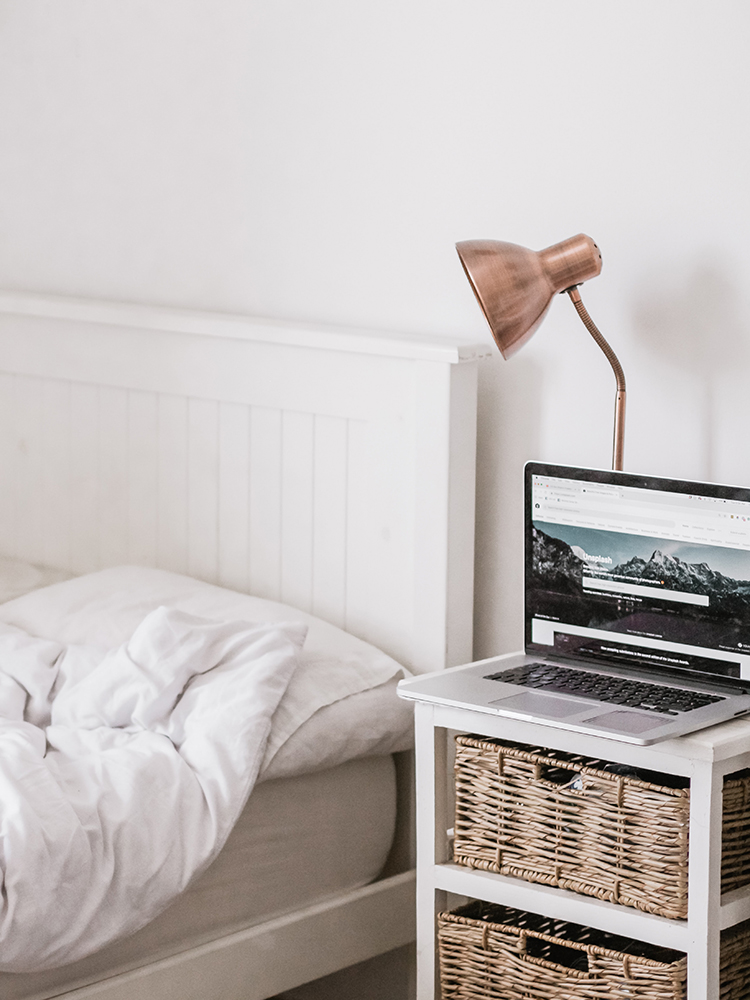


Given the state of the world, most countries now have a “stay at home” order that includes working from home, social distancing, and self-quarantining. While working from home is some people’s normality, it’s foreign for most. Without setting boundaries and guidelines it can be really easy to fall into an unproductive cycle leading you to a 12-14 hour workday if you’re not careful. By creating a schedule that’s sustainable it can dramatically improve your days at home. Health, including mental health is of the utmost importance these days and without prioritizing that, workdays can be seriously compromised without boundaries.
Morning Routine:
With or without a commute, having a morning routine that you can rely on helps start the day. Create a ritual that’s sustainable for you. That could mean not looking at your phone or the news for the first hour of the day, reading for 10 minutes before responding to emails, meditating, working out, making a nourishing breakfast. The options are endless, but what’s important is to create a routine and a ritual that you will stick to.
Getting Dressed:
It’s tempting to sit in sweats and avoid getting ready for the day. I mean, why bother if you’re just going to be sitting at home not interacting with anyone? This might be fun for the first day or two, but shortly after your mood can be heavily altered from this. Personally, I’ve found that if I don’t get dressed my mood and productivity levels dramatically decrease. Be sure to pick out an outfit that you feel good in and watch your mood be elevated!
Take Breaks and Move:
Taking breaks is essential to working from home. Much like an office, it’s easy to get trapped in your cubicle, now bedroom. Just because you work nonstop doesn’t mean you’re necessarily being productive during the entire time you’re working. A lot of it consists of endless scrolling on social media, the internet, or updating your Amazon shopping cart. Through research, the Draugiem Group, a social networking company used a productivity app called DeskTime, where they conducted an experiment to see which habits distinguished their most productive employees apart. They found that 10% of employees with the highest levels of productivity took regularly scheduled breaks. Specifically, they took 17-minute breaks for every 52 minutes they worked.
Along with taking breaks, if you can, be sure to get outside. I can’t stress this enough. Being able to connect to nature during an unpredictable time can also give your mind a big reset. Just be sure to keep your distance from other people (at least 6 feet apart) and don’t feel bad about crossing the street if people are coming your way, this is how we minimize exposure rates.
Protect Your Space and Time:
Though it’s tempting to work in bed, don’t. Choose an area to work that’s conducive for you. Try sprucing up your work area by making sure it’s decluttered. You can even add a plant, candle or artwork to your area to make it a little bit more cozier. Once you’ve established your workspace, be sure to protect your time. Unless your work requires you to be “on-call” 24/7 it’s best to shut off work at the same time every day and not check email or do work-related things during your downtime. Remember, your downtime is for you, not for your bosses. By establishing a quitting time, you can allow your brain and body to get the rest it needs to feel refreshed for your next day.
Trial and Error:
Getting a solid routine down takes time, practice, and patience, especially if you’re new to working from home. You’re not going to get it right the first week or even the first month. Practice self-compassion during this time. Only you will know what works for you. Test your routine out, assess what helps and be your own advocate for your needs during this time.
世界の情勢を考えると、ほとんどの国でテレワーク、社会的距離、自己検疫などの「STAY HOME」が可能になってきています。 在宅勤務は一部の人にとっては当たり前のことですが、ほとんどの人にとって馴染みがない事です。 範囲とガイドラインを設定して注意しないと、非生産的なサイクルに陥り、1日当たり12〜14時間の労働につながる可能性があります。 持続可能なスケジュールを作成することで、自宅での日々を劇的に改善できます。 メンタルヘルスを含む健康は今日最も重要であり、それを優先しなければ自宅での労働が深刻な問題になる可能性があります。
毎朝の日課:
通勤の有無にかかわらず、朝のルーティンを持っていると、その日をスムーズに始められます。 あなたにとって持続可能な儀式(ルーティン)を作りましょう。 つまり、1日の最初の1時間はスマートフォンやニュースを見ないで、メールに返信したり、瞑想したり、エクササイズをしたり、栄養のある朝食をとる前に10分間読書することです。 無限に考えられますが、重要なのはルーティンを作り上げることです。
着替える:
汗をかいたままだとその日の準備をするのも嫌になります。 家から出ないで誰とも対話しないのなら、なぜわざわざ着替えるの? と思うかも知れません。最初の1日か2日はおかしな感じがするかもしれませんが、着替える事は気分を大きく変える可能性があります。 個人的には、服を着ないと気分が悪くなり、生産性が大幅に低下することがわかりました。 気分が良い服を選び、気分が高まるのを実感してください!
休憩して移動:
在宅勤務には休憩が欠かせません。 オフィスで働いている時と同じように。ノンストップで仕事をする事が必ずしも生産的であるとは限りません。 調査を通じて、ソーシャルネットワーキング企業のDraugiem GroupはDeskTimeと呼ばれる生産性アプリを使用し、どの習慣が最も特徴的であるかを確認する実験を行いました。その結果、最高レベルの生産性を持つ従業員の10%は定期的にスケジュールされた休憩を取っていることが分かりました。 具体的に彼らは52分ごとに17分の休憩を取っていました。休憩を取りながら、できれば外に出るようにしましょう。 自然とつながることができることは、あなたの心に大きなリセットを与えることもできます。 他の人との距離は適度に保ってください(少なくとも6フィート)。
自分の空間と時間を守ります:
ベッドで働くのは魅力的ですが、良くないです。 働きやすいスペースを選んでください。 作業スペースが整理されていることを確認したら、その作業スペースを拡大してみてください。 植物、キャンドル、アートワークをそのエリアに追加してみる事で少し居心地を良くすることもできます。 ワークスペースを確立したら、時間を保護してください。 仕事で24時間年中無休で電話をかける必要がない限り、毎日同じ時間に仕事を止めて、その時間帯はメールをチェックしたり、何かしらの仕事をしないことをお勧めします。 ダウンタイムは上司のためではなく、あなたのためのものであることを忘れないでください。 禁煙時間を設定することで、リフレッシュするのに必要な残りの時間を脳と体に与えることができます。
試行錯誤してみる:
特に家で仕事をするのが初めての場合は、しっかりした日常生活を送る為に、時間、練習、忍耐が必要です。 最初の週、または最初の月から正しくするつもりはありません。 この間、自分の中で色々実践してみてください。 あなただけがあなたのために何がうまくいくかを知るでしょう。 あなたのルーティンをテストし、何が役立つかを評価し、あなた自身が自分の支持者になりましょう。